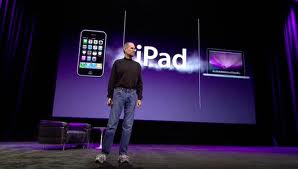2011 will surely go down as the year Apple changed the face of the communications industry.

In the space of just a few weeks, industry giants Nokia and T-Mobile have both crumpled under the Apple tsunami. Now Acer, the world’s No. 2 PC maker by shipments, is the latest to feel the pain.
Yesterday it was reported that Gianfranco Lanci, Acer’s CEO, resigned as part of the company’s efforts to reorganize its operations to tackle the rising challenge from Apple’s iPad.
The management change comes after Acer revised its first-quarter earnings forecast downward last week amid increasing concerns about sluggish demand for notebook PCs globally. The iPad is beginning to eat into the notebook and netbook markets, in which Acer has strong positions.
Three weeks ago AT&T announced its plan to acquire T-Mobile, the 4th largest wireless carrier in the United States. Most of the news focus was on AT&T and it’s need for spectrum and network quality to stem the dropped calls for which it has become notorious.
What had made T-Mobile so amenable to the merger was the advent of the iPhone.

Customers weren’t having any problems with the T-Mobile network. The problem they had was that they wanted the iPhone and T-Mobile couldn’t offer it to them. So they left in droves.
T-Mobile’s reported a net loss of 318,000 customers in the last three months of 2010, which is more than twice as bad as the 117,000 customers lost during the same time period in 2009. It followed the 60,000 customers lost in Q3 2010.
T-Mobile failed to convince subscribers that it had a phone worthy of consideration over the iPhone and paid dearly for it. When Verizon started carrying the iPhone on February 11 the game was evidently over.
Coincidentally, on that same day, the CEO of cell phone giant Nokia announced a deal with Microsoft to use its Windows 7 software in an attempt to get back into a game it once dominated.
In a now famous “burning platform” memo to employees CEO Stephen Elop identified the cause of Nokia’s problem: Apple.
“The first iPhone shipped in 2007, and we still don’t have a product that is close to their experience. Android came on the scene just over 2 years ago, and this week they took our leadership position in smartphone volumes. Unbelievable.”
Nokia’s share price has fallen by two-thirds since then as it tried, unsuccessfully, to produce an iPhone killer. In the meantime, low-cost Chinese manufacturers, using Google’s Android software, have eaten into Nokia’s sales of basic handsets in emerging markets and are moving up the value chain quickly, commoditizing the entire industry in the process.
Where Nokia and Acer (and Motorola) see devices, Apple sees creative connections.
Apple has blurred the distinction between phones and computers, integrating them both into a mobile computing platform which is wrapped and delivered in the Apple brand experience.
The iPhone is a full-blown computer with touchscreen technology that turns the mobile Internet into a user-friendly experience. The apps that began appearing in 2008 enabled people to customize their iPhones to suit their lives.
It was the precursor of the iPad, which in itself has moved the game forward (as Acer would affirm). Both are natural expressions of the Apple brand ecosystem – form and function are seamlessly linked and forged into objects of desire. Expect to see news about Apple TV soon.
The power of the Apple brand is in its ability to create desire, to generate demand and to open new markets. Others can only follow, chasing market share with me-too products sold through low grade, third-party retail experiences.
Apple has already revolutionized the music industry with the iPod and iTunes store. One year ago the store served its 10 billionth song download; a milestone was reached in just under seven years of being online, making Apple the largest music retailer in the world.
This communications revolution is just beginning.
 This video of Steve Jobs is always worth a view, if only as a reminder of the foundational philosophy behind the Apple brand.
This video of Steve Jobs is always worth a view, if only as a reminder of the foundational philosophy behind the Apple brand.
Related articles
- The iPad’s effect on rival companies’ CEOs (tuaw.com)
- Heads roll at competitors as Apple continues to churn out hit products (9to5mac.com)
- Acer CEO forced out (news.cnet.com)
- Acer Sets Sights on Apple, HTC After Lanci Chase of HP Stumbles (businessweek.com)
- Nokia Execs Go On Vacation When iPhones Start Shipping (thenokiablog.com)




